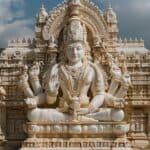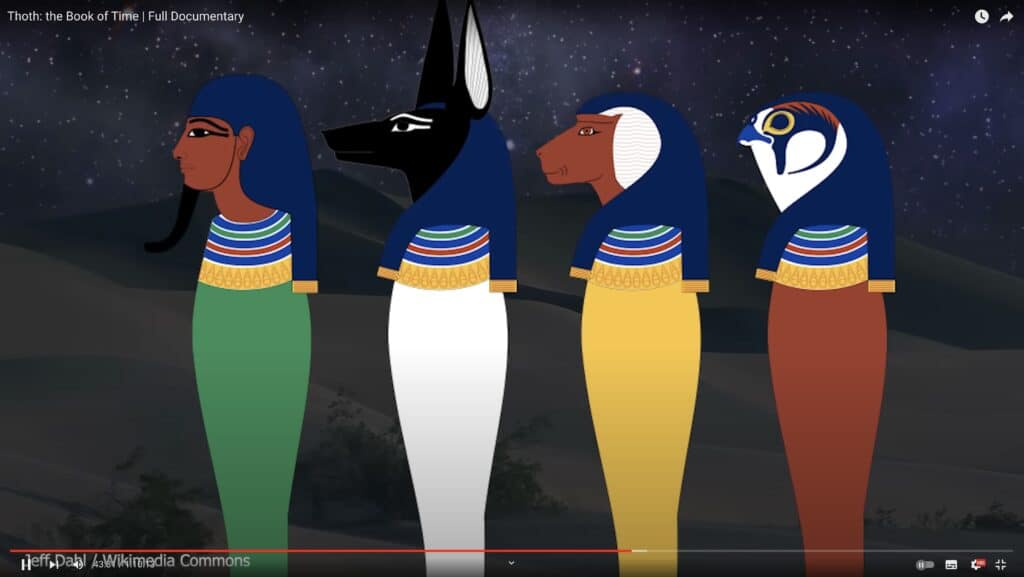Table of Contents
Deities with multiple arms and heads are common in various mythologies and religions, often symbolizing their superhuman nature and abilities.
Plato’s Symposium
Even the classical philosopher Plato (d. 348/347 BC) has a character who speaks about a primeval androgyne. (See 189a-189b)
For our original nature was by no means the same as it is now. In the first place, there were three kinds of human beings, not merely the two sexes, male and female, as at present: there was a third kind as well, which had equal shares of the other two, and whose name survives though, the thing itself has vanished. For ‘man-woman’ was then a unity in form no less than name, composed of both sexes and sharing equally in male and female; whereas now it has come to be merely a name of reproach.
Secondly, the form of each person was round all over, with back and sides encompassing it every way; each had four arms, and legs to match these, and two faces perfectly alike on a cylindrical neck. There was one head to the two faces, which looked opposite ways; there were four ears, two privy members, and all the other parts, as may be imagined, in proportion. … The number and features of these three sexes were owing to the fact that the male was originally the offspring of the sun, and the female of the earth; while that which partook of both sexes was born of the moon, for the moon also partakes of both.
Plato, Symposium 189d-190b
The depiction with four arms and four heads is less common but can be found in a few prominent examples:
Brahma

In Hinduism, Brahma is one of the principal deities and part of the Trimurti, which includes Vishnu and Shiva. Brahma is typically depicted with four heads, each looking in a different direction, symbolizing his omnipresence and omniscience. He is often shown with four arms, holding items like a water pot, a spoon, the Vedas (scriptures), and a rosary. His four heads represent the four Vedas, the most sacred texts in Hinduism.
Chaturmukha
This is another aspect found in Hinduism and some Buddhist traditions. Chaturmukha translates to “four-faced,” referring to deities who are depicted with four faces/heads, sometimes also with multiple arms. This form usually expresses the deity’s ability to see in all directions simultaneously—symbolizing complete awareness.
Tetramorphs
In Christian iconography, a tetramorph is a symbolic arrangement of four different entities, each corresponding to one of the four evangelists: Matthew, Mark, Luke, and John. They are often depicted with four faces on a single body or as four-winged creatures, each with a different face (human, lion, ox, and eagle). While not gods in the strict sense, these figures carry divine messages and symbolize the nature of the Gospels.
4 Sons of Horis

Svantevit
Svantevit was depicted with four necks and four heads, two of them facing in front and two behind. Multiple heads were the most important feature of the Slavic pantheon of gods. It is believed that Svantevit may also have been worshipped as a supreme deity and seen as a father to other gods. The center of his worship was in Arkona (Arcona) – the ancient temple of the Slavs built on a high rocky shore of the Baltic island of Rügen, Germany.

